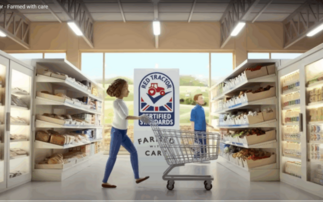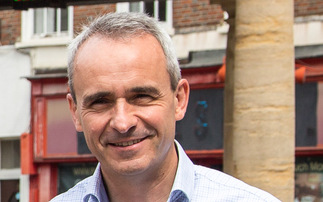A new set of 'Good Life Goals' aim to link the SDGs with tangible, individual actions to promote healthy and sustainable lifestyles worldwide
On the one hand, the very existence of the UN Sustainable Development Goals (SDGs) can be viewed as a landmark victory for the environmental movement. Just for a start, getting nations around the world to agree on a set of medium-term targets covering climate change, poverty, hunger, gender equality and education, and many other key issues is no easy feat.
Moreover, the SDGs have been largely been welcomed as a positive development by businesses and governments, providing them with a clear set of global priorities up to 2030 with which to build their own strategies around.
Yet while business leaders and policy makers often extoll the virtues of the SDGs, it is hard to envisage the existence of these targets easily cutting through into most people's lives. After all, time is short at the office water cooler to discuss last week's episode of Bodyguard or the weekend's football scores. How exactly does anyone fit 17 globally agreed goals and 169 sub-goals aimed at bettering human society into daily conversation? As well-intentioned as they may be, not even Kanye West, with all his 28 million Twitter followers, seems to have managed to put the SDGs on most people's radar.
It was while pondering how to best engage the public with the 17 goals and make them relevant to daily life that Solitaire Townsend, co-founder of PR consultancy Futerra, says she accidentally "hacked" the SDGs a couple of years ago.
"I was sitting in a meeting between UN Environment and the OECD talking about sustainable lifestyles," she tells BusinessGreen. "There were lots of fantastic examples of work going on around the world, but everybody was talking about how there was still a lack of clarity as to what constitutes a sustainable lifestyle for most people. We were sitting underneath a poster for the SDGs at the time, so for fun I wrote down what I would do for each of the SDGs to contribute in my own personal life."
Townsend immediately posted this personal "hack" of the SDGs on social media during the meeting, which she says were quickly shared and commented on thousands of times. But unfortunately, unbeknownst to her, by re-writing the SDGs in such a manner Townsend had actually flouted the UN's copyright, and was quickly asked to take down her posts.
Nevertheless, another arm of the UN - the 10 Year Framework of Programmes on Sustainable Consumption and Production (10YFP) - recognised Townsend might be onto something.
"I have absolute respect for the UN - both for protecting the copyright of the SDGs, and for having the insight to recognise there was clearly a demand from people to have some clarity," she jokes. "So they decided to get some academic work behind the idea and do it properly."
Fast forward to the third anniversary of the SDG's official unveiling, and the government and corporate-focused goals have this week been bolstered by the launch of the 'Good Life Goals', a set of tangible positive actions aimed at linking individual lifestyles with the original SDGs.
Townsend argues it remains crucial for people as individuals - consumers, neighbours, employees, and members of communities - to engage as deeply as possible with the SDGs. "The SDGs have been strongly adopted by governments and businesses, but - and it's an important 'but' - 7.5 billion of us are needed to make the SDGs happen," she explains. "In fact the UN itself says that for the SDGs to be reached, everyone needs to do their part - governments, the private sector, civil society, and people like you and I. We are focusing on the final part of that list because people can have an enormous impact on the SDGs through our everyday actions."
The aim is for the GLGs to act as "the welcome mat to the SDGs for people", she explains.
"Governments serve their people and businesses serve their consumers, yet the SDGs up until now have very much been about powerful people - CEOs, government leaders - those who have a lot of resources and influence at their fingertips," Townsend argues. "The GLGs are about people power, what individuals can do in their own lives to make a difference."
To that end, each of the 17 SDGs has essentially been rebranded and redesigned in order to make them relevant, easily understood, and accessible to individuals globally. The language behind each of the Good Life Goals (GLGs) has been simplified, with a view to enabling their translation into numerous languages while maintaining their applicability to cultures and lifestyles all over the planet.
Several years in the making, the GLGs have been shaped though a multi-stakeholder collaboration between Futerra, the UN 10YPF Sustainable Lifestyles and Education (SLE) programme, UN Environment, UNESCO, the World Business Council for Sustainable Development (WBCSD), and the governments of Japan and Sweden.
The aim was to ensure every action in the goals was accessible and affordable for the greatest numbers of people, many of which live in extremely different circumstances and with differing levels of wealth all around the world. As such, development of the GLGs was also bolstered by academic research from the Stockholm Institute and Japan's Institute for Global Environmental Strategies (IGES).
"It's been a very intense process to get towards something that hopefully sounds very straightforward and obvious," Townsend says of the GLGs. "Our hope is that they sound and feel so simple that no one gets a sense of how much work went behind them."
The result is a set of straightforward actions that often focus on encouraging individuals to improve their awareness of the underlying issues surrounding, for instance, poverty, hunger, and gender equality. 'Learn the causes of poverty at home and abroad', one goal states, for example, while another urges people to 'Buy from companies that pay people fairly'.
"The GLGs could easily have run to 700 or 800 actions, but our lives are complex," Townsend says. "From our work, to food and travel, each of us makes thousands of decisions a day, so it was important to bring it down to a comprehensible list. I don't think anyone is going to put these actions up above their bed and tick them off before going to sleep when they've done them, but for each one of these GLGs there is a big conversation to be had around them."
For example, there are plans to start using the GLGs in schools, Townsend says, while brands can use them to engage audiences towards driving collective sustainable development.
Still, regardless of all the PR work to drum up public support for sustainable development and lifestyles, why should businesses be interested in the Good Life Goals? Townsend points to three main drivers.
"Many companies have a commitment to help their consumers live a more sustainable lifestyle, so this gives a real focus for that, from saving water, to recycling and welcoming new people," she explains. "A lot of companies are also looking for ways to engage their workers, and the GLGs are a really good starting off point, particularly regarding the wellbeing of staff. And then finally, businesses have a really significant role in actually helping to provide the products and services to help people live a good life. It's a real driver of innovation - lots of companies are now looking at how people are going to live in the near future. Significant numbers of millennials and generation Zs are searching for what a sustainable, healthy lifestyle is, and the GLGs help set that out. They're almost a 'to-do' list to help brands engage with their consumers."
It's a compelling argument, and one which provides a dose of much-needed optimism in the ongoing struggle to solve some of the world's most complex, and in many cases existential, problems. There are only 12 years for the world to achieve the 17 SDGs and 169 sub-targets, so it looks like there is still quite a mountain to climb. But Townsend is relishing the journey.
"I always go back to something Bill Gates once said: 'We always overestimate what we can do in a year, and underestimate what we can do in a decade'," she reflects. "Very few people realise we've managed to halve global poverty worldwide in the last 20 years - an extraordinary achievement. I think we massively underestimate our ability to make change. Without 7.5 billion people engaged in positive change, I think we are going to be challenged. It's the missing part of the puzzle. But if you've got civil society, businesses and institutions all engaged, put public action in as well, and I think we've got a very, very powerful coalition of change."








